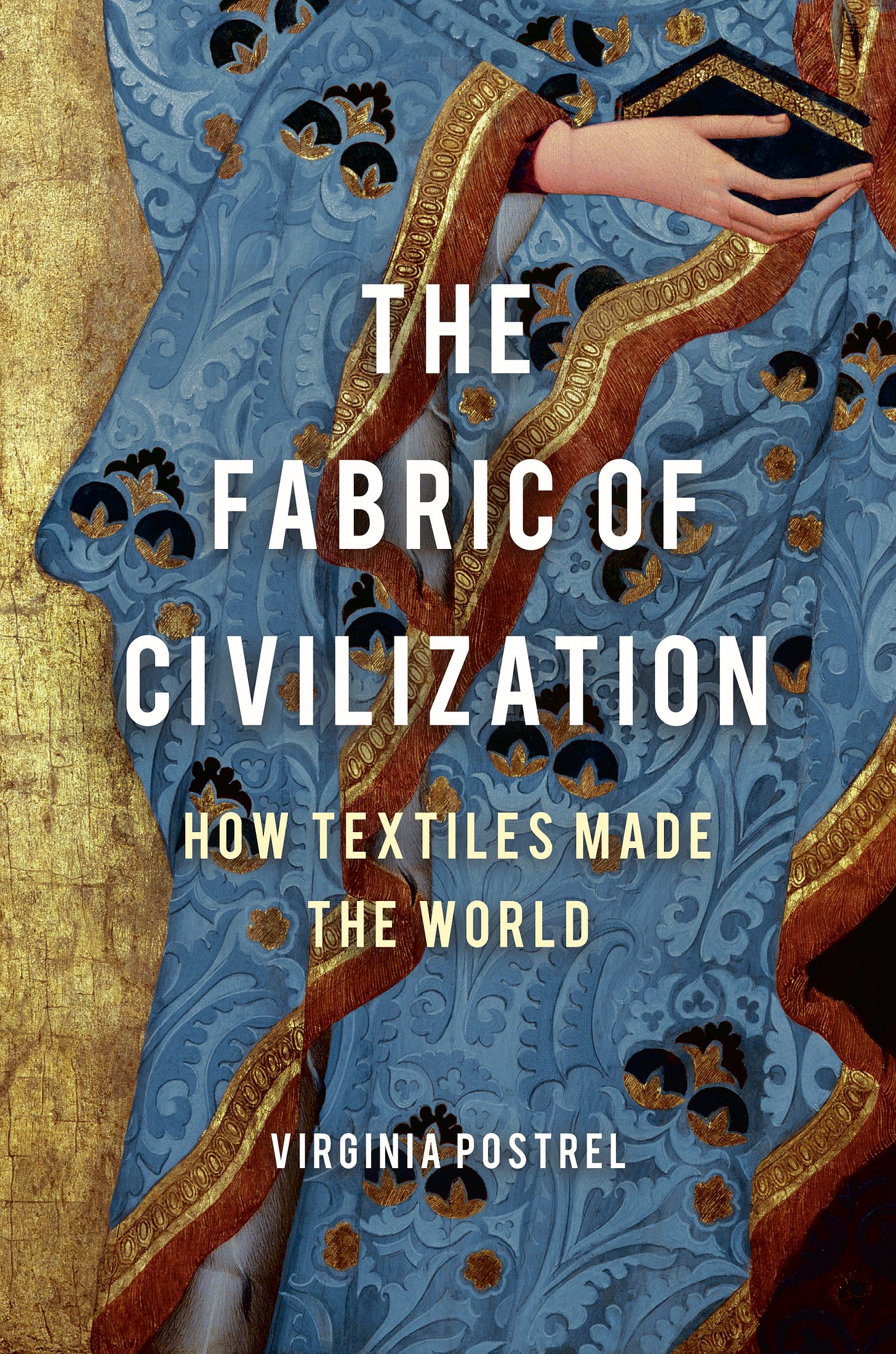In the modern day, most simply purchase their clothes from a shop or online. Even in the most extravagant of situations, a tailor takes measurements and fabricates in the background. Yet, even the humblest T-shirt is the product of 50,000 years of human history. At the same time our hominin ancestors (and our cousins the Neanderthal) were working stone tools and mastering fire, they were rolling together humble tree fibers to form string.
It is the journey from tree fiber string to standard cotton T (and then some more) that Virginia Postrel weaves in her book: The Fabric of Civilization.
An ambitious project made all the more so with her inclusion of all 5 inhabited continents, Mrs. Postrel illustrates how the need and desire for fabric and clothing serves as commonality among all peoples, past and present, from pre contact Americas to modern Sub-Saharan Africa. Going above and beyond the regular bromides of Tyrian Purple and the Silk Road, she unwinds the hidden story of textiles and their impact on human society.
Highlights include how a dye made from crushed Mexican bugs became one of the chief exports of the New World, providing the famed Red of Early Modern Roman Catholic Cardinals or British Army officers. Or perhaps how the modern numeral system based off of Hindu digits and the Arabic zero was popularized by the son of Medieval textile trader: Leonardo of Pisa, known to us as Fibonacci of Fibonacci sequence fame.
The book is divided into seven chapters, each based on an aspect of textiles:
Fiber
Thread
Cloth
Dye
Traders
Consumers
Innovators
Each chapter is written in chronological order, beginning as far back as historical records permit and progressing into the immediate present (there are descriptions of cutting edge research and start ups).
The Fabric of Civilization by Virginia Postrel is an odd history book. It doesn’t tell the narrative of a person or peoples or nation, but rather the very clothes on our back. Equal parts science and history, the book is titanic in scope. Ms. Postrel covers the whole history of textiles, from the Paleolithic right up into the modern day. All in ~250 pages. A romp through time, but an exceedingly educating one.



